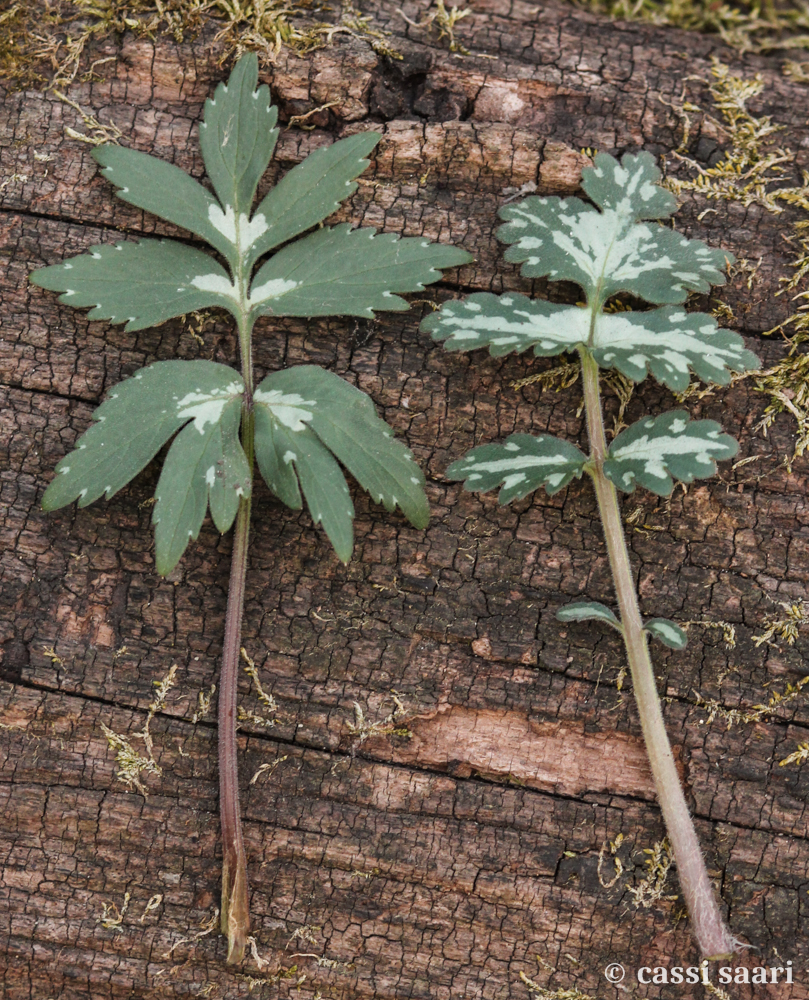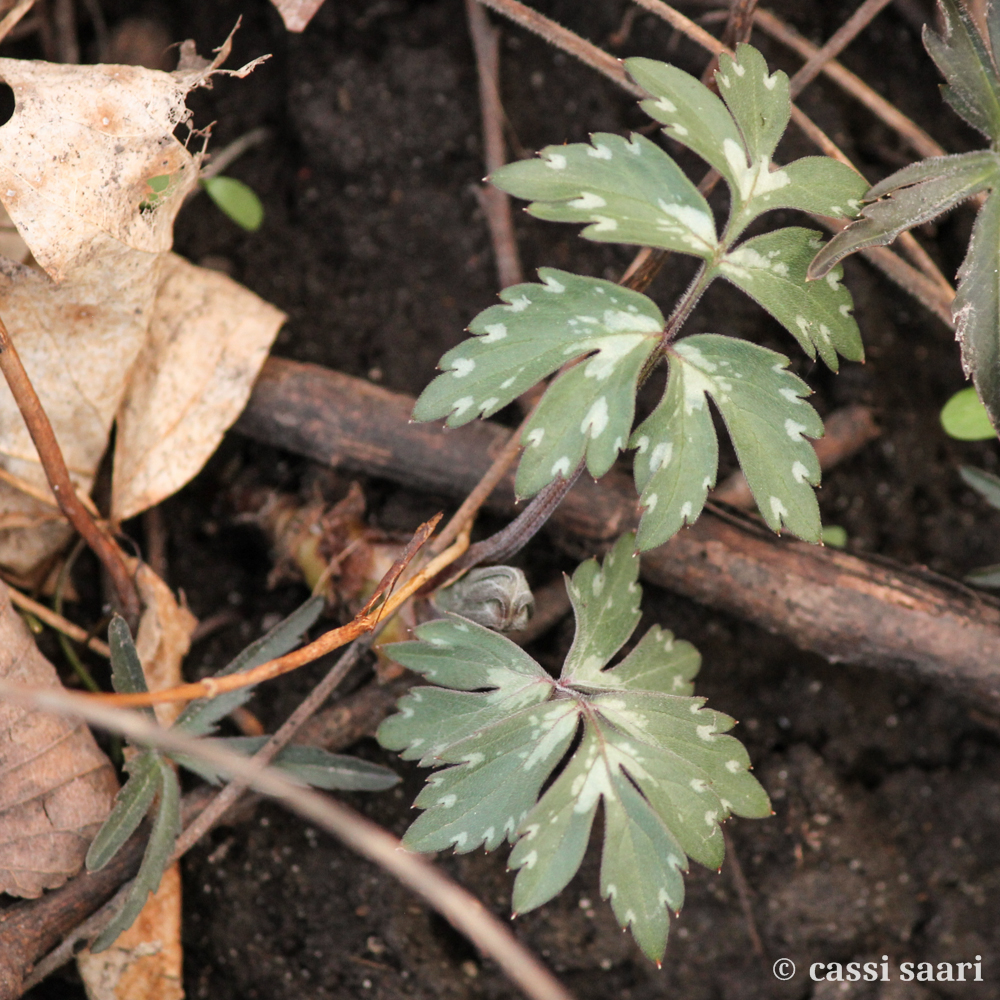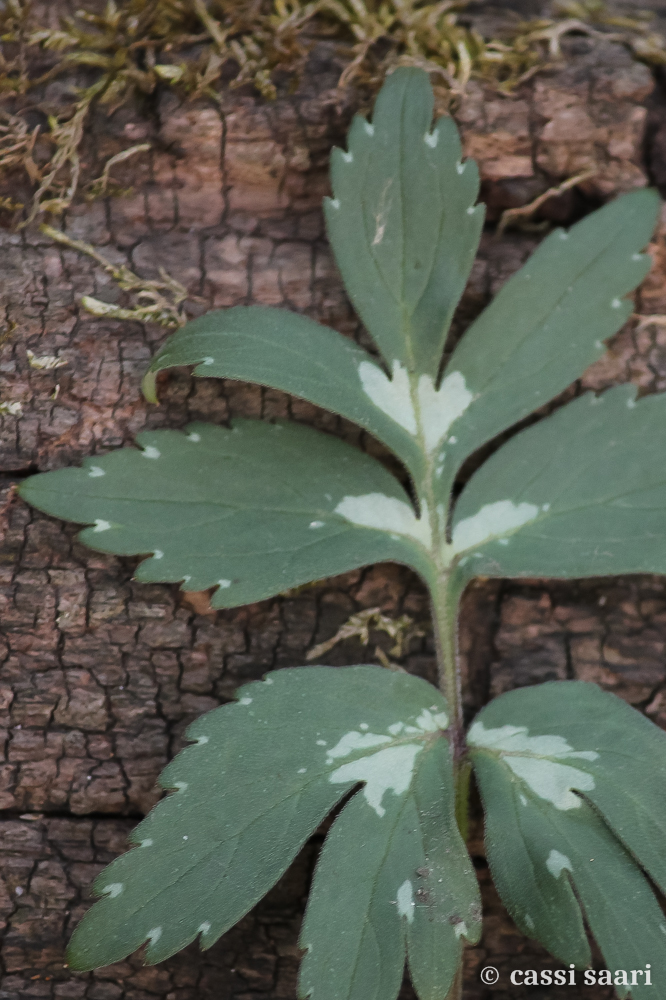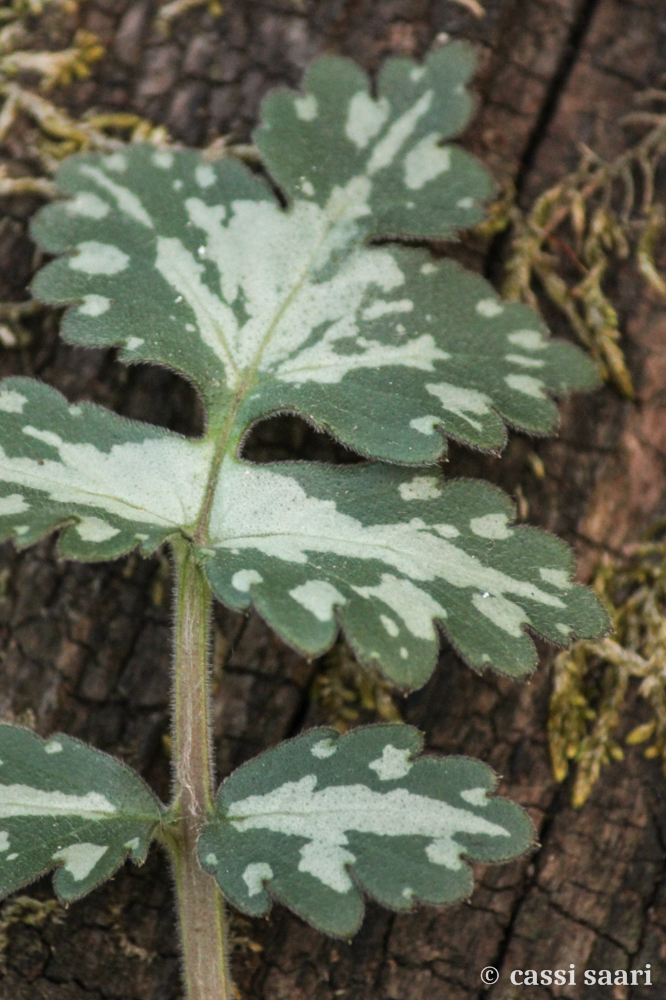How do you distinguish Virginia and great waterleaf plants in the early spring? Swink & Wilhelm (1994):
1. Leaves predominantly pinnately compound or lobed, divided into 5 to 7 lobes or leaflets. . . . . Hydrophyllum virginianum
1. Leaves predominantly palmately lobed, or some with a small pair of pinnae at the base:
Calyx lobes copiously pilose, with conspicuous, reflexed processes in the sinuses; stems usually densely pilose or pubescent; biennial. . . . . . . . Hydrophyllum appendiculatum
Calyx lobes glabrous or sparsely hispidulous, without processes in the sinuses; stems glabrous or nearly so; perennial. . . . . . . . . . . . Hydrophyllum canadense
Welp, turns out the early spring rosettes of Hydrophyllum appendiculatum are pinnately compound, not palmately compound. So, that key’s only helpful for mature plants. Never fear, here are a bunch of comparison photos:
The early spring, basal leaves of Virginia waterleaf (Hydrophyllum virginianum) and great waterleaf (Hydrophyllum appendiculatum), side-by-side:

Singular leaves of Hydrophyllum virginianum (left, view on iNaturalist) and Hydrophyllum appendiculatum (right, view on iNaturalist).
Look how much more rounded the edges are in great waterleaf, how much fuzzier the stem is, and how much more variegation there is.


In situ rosettes of Hydrophyllum virginianum (left) and Hydrophyllum appendiculatum (right)


Hydrophyllum virginianum (left) and Hydrophyllum appendiculatum (right)
Hydrophyllum canadense is not really found in my area (northcentral Illinois), so I don’t have any photos of that at all, much less in a rosette stage. If this photo can be believed, it looks like it has significantly wider lobes even as a rosette, and a more geometric appearance overall. I’d guess its petioles are not as fuzzy as H. appendiculatum as well (see key above).
This post inspired by my error – mistaking a basal H. appendiculatum leaf as H. virginianum.